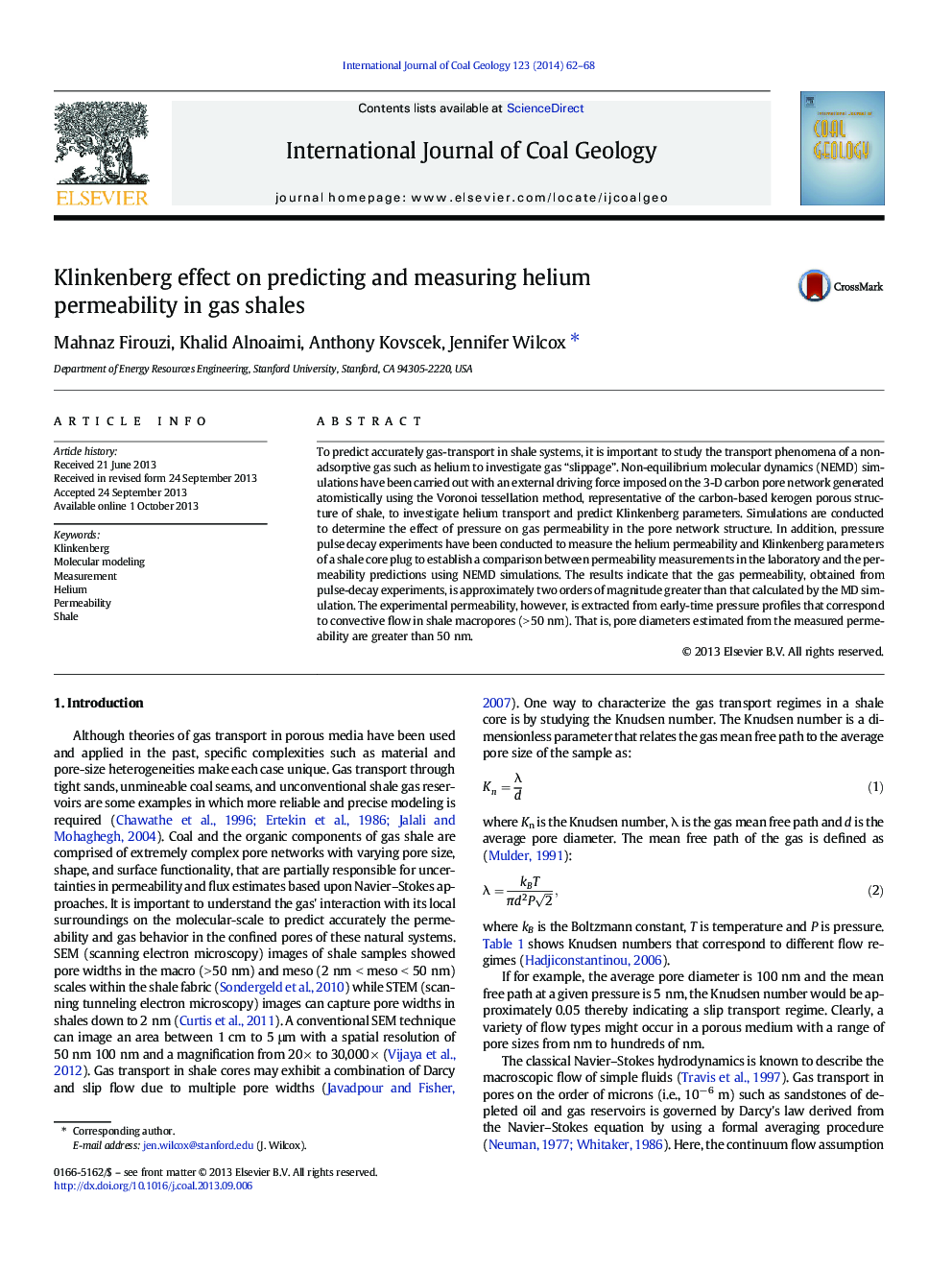| Article ID | Journal | Published Year | Pages | File Type |
|---|---|---|---|---|
| 1753287 | International Journal of Coal Geology | 2014 | 7 Pages |
To predict accurately gas-transport in shale systems, it is important to study the transport phenomena of a non-adsorptive gas such as helium to investigate gas “slippage”. Non-equilibrium molecular dynamics (NEMD) simulations have been carried out with an external driving force imposed on the 3-D carbon pore network generated atomistically using the Voronoi tessellation method, representative of the carbon-based kerogen porous structure of shale, to investigate helium transport and predict Klinkenberg parameters. Simulations are conducted to determine the effect of pressure on gas permeability in the pore network structure. In addition, pressure pulse decay experiments have been conducted to measure the helium permeability and Klinkenberg parameters of a shale core plug to establish a comparison between permeability measurements in the laboratory and the permeability predictions using NEMD simulations. The results indicate that the gas permeability, obtained from pulse-decay experiments, is approximately two orders of magnitude greater than that calculated by the MD simulation. The experimental permeability, however, is extracted from early-time pressure profiles that correspond to convective flow in shale macropores (> 50 nm). That is, pore diameters estimated from the measured permeability are greater than 50 nm.
